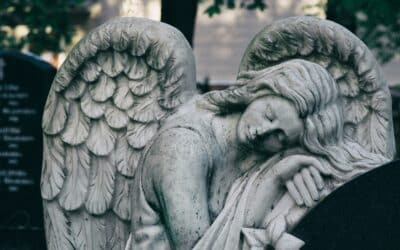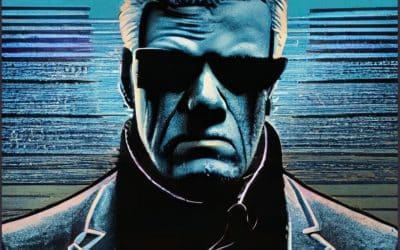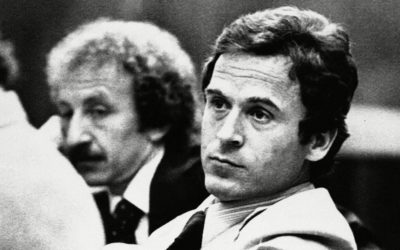Iconic Characters of True Crime
The world of true crime has given birth to a slew of notorious individuals, each notorious in their own right, who have found their ways into both books and films.
One of the most iconic characters in true crime is Charles Manson, a name synonymous with malevolent charisma and mind control. Manson, leader of the Manson Family cult, orchestrated a series of gruesome murders in 1969, chillingly referred to as the Tate-LaBianca murders. The vivid recounting of these brutal crimes has been adapted in several books and films, such as “Helter Skelter,” providing a glance into the mind of a man who could manipulate his followers to commit heinous acts.
Al Capone, also known as Scarface, is another character who has fascinated true crime aficionados for decades. The ruthless Chicago gangster of the Prohibition era was infamous for his illicit enterprises involving bootlegging, racketeering, and various other criminal activities. Capone’s life has been the subject of numerous works, including the film “The Untouchables” and the book “Capone: The Man and the Era” by Laurence Bergreen. The appeal of his character lies in the juxtaposition of his brutal reign and the backdrop of the Roaring Twenties, an era marked by extravagance and rebellion.
Within the annals of true crime, Aileen Wuornos surfaces as a rare female serial killer. A drifter in Florida, Wuornos’s life and her series of murders of seven men between 1989 and 1990 were depicted in the film “Monster,” with Charlize Theron delivering an Oscar-winning portrayal of Wuornos. Her life has also been chronicled in the book “Lethal Intent” by Sue Russell, providing a sobering look at the making of a killer against a backdrop of abuse and despair.
Ted Bundy, the name that sends shivers down the spine, has garnered a grim following, marking him as one of the most notorious serial killers. Bundy’s cold and calculated killing spree during the 1970s is meticulously chronicled in Ann Rule’s book “The Stranger Beside Me.” This work, in particular, reveals an unsettling perspective, as Rule, a former colleague of Bundy, intertwines personal anecdotes with the horrific details of his crimes. His grisly charm also captivated audiences in the film “Extremely Wicked, Shockingly Evil and Vile,” with Zac Efron delivering a disturbingly authentic performance as Bundy.
The Zodiac Killer remains an enigmatic figure in the world of true crime, having terrorized Northern California in the late 1960s and early 1970s. Known for his cryptic letters sent to newspapers, the Zodiac Killer’s true identity remains unknown, fueling speculations and theories. The mystery surrounding this character has been depicted in both Robert Graysmith’s book “Zodiac” and David Fincher’s film adaptation of the same name. The elusive nature of the Zodiac Killer has kept audiences hooked, delving deep into the unsolved mysteries and the cryptic codes left behind.
Peek further, and one encounters the notorious duo, Bonnie and Clyde. These young lovers and criminals have been glamorized and romanticized in both literature and films, most notably in the 1967 film “Bonnie and Clyde,” starring Warren Beatty and Faye Dunaway. The duo’s life of crime during the Great Depression, marked by bank robberies and shootouts, has been chronicled in Jeff Guinn’s book “Go Down Together: The True, Untold Story of Bonnie and Clyde,” stripping away the glamor and presenting a vivid portrayal of their tumultuous lives.
Whitey Bulger, the infamous Boston mob boss, has left an indelible mark on true crime history with his violent reign over the Boston underworld. His story is immortalized in the book “Black Mass: Whitey Bulger, the FBI, and a Devil’s Deal” by Dick Lehr and Gerard O’Neill and adapted into the film “Black Mass,” starring Johnny Depp. Bulger’s tale of corruption, power, and deceit delves into the symbiotic relationship between criminals and law enforcement, revealing the blurred lines between right and wrong.
Delve into the grim corridors of crime literature, and the haunting presence of Ed Gein lurks around. His gruesome acts of grave robbing, murder, and body desecration have inspired various books, including “Deviant” by Harold Schechter, as well as several films, most notably “Psycho” and “The Silence of the Lambs.” The exploration of Gein’s deranged psyche serves as a reminder of the horrors that can be concealed behind a facade of normalcy.
Meanwhile, the compelling case of the West Memphis Three, involving three teenagers convicted, and later released, for allegedly committing murders as part of a satanic ritual, has sparked a debate on justice and morality. The story, outlined in Mara Leveritt’s book “Devil’s Knot,” also adapted into a film of the same name, raises questions about the legal system, societal prejudices, and the relentless pursuit of truth in the face of adversity.
Every iconic character from the world of true crime, whether shrouded in mystery like the Zodiac Killer or notoriously celebrated like Bonnie and Clyde, has given rise to a plethora of adaptations and interpretations. Each sordid tale presents a glimpse into the darkest corners of human nature, becoming iconic in their representation of the criminal mind. While the grisly allure of these true crime tales might seem macabre, it’s this very exploration of the dark and the depraved that keeps the seekers of mystery engrossed, pondering over the enigma that is the human psyche.
More True Crime Features
Southern Unsolved Mysteries
Three of the South’s Most Terrifying Unsolved Mysteries
Real Life Monsters
The Appeal of True Crime: When Real Life Becomes a Monster Story
The Villains of True Crime
The Predators of True Crime Think Differently



